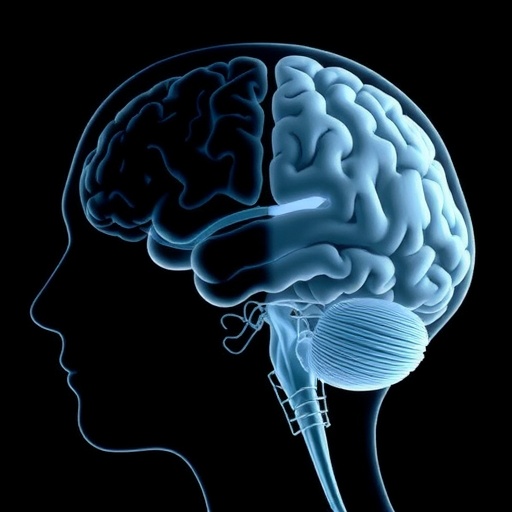In a groundbreaking advancement in psychiatric neuroscience, a recent comprehensive meta-analysis has illuminated a significant biological marker linked to suicide attempts within affective disorders: white matter hyperintensities (WMHs). This meticulous synthesis of existing research offers penetrating insights into the structural brain abnormalities associated with heightened suicide risk, potentially charting a new course for both diagnosis and intervention strategies in mood disorders.
Affective disorders, including major depressive disorder and bipolar disorder, have long been recognized as some of the most prevalent yet severe mental health conditions globally. The complexity of these illnesses is compounded by the tragic reality that individuals suffering from them often face an increased propensity toward suicidal behavior. The labyrinthine web of psychological, social, and biological factors contributing to such outcomes has been extensively studied, yet reliable biomarkers that might predict suicide risk with higher precision have remained elusive—until now.
White matter hyperintensities are lesions detected via magnetic resonance imaging that appear as bright spots on certain MRI sequences. These disruptions in the brain’s white matter have commonly been associated with aging, vascular pathology, and a range of neuropsychiatric disorders. However, their specific role within the realm of affective disorders, particularly as harbingers of suicidal behavior, warranted a systematic and quantified exploration—a gap addressed by Torino et al. in their recent work.
The team embarked on a systematic review and meta-analysis incorporating data across numerous studies worldwide, carefully integrating findings related to WMHs and documented suicide attempts among patients diagnosed with mood disorders. Their rigorous inclusion criteria and sophisticated statistical modeling ensured that the pooled results carried substantial weight and reliability, avoiding some of the pitfalls commonly encountered in meta-analytical research such as publication bias and heterogeneity.
Their findings revealed a robust association: individuals exhibiting greater volumes and intensities of white matter hyperintensities had significantly higher odds of having attempted suicide compared to those with fewer or no such lesions. This connection persisted even after controlling for confounding factors such as age, sex, comorbidities, and medication status, suggesting an intrinsic neurobiological substrate linking white matter pathology to suicidal behavior within affective disorders.
Delving deeper into potential mechanisms, the authors hypothesize that WMHs could impair critical white matter tracts responsible for emotional regulation, impulse control, and cognitive flexibility. Disruptions along these neural pathways may hinder the brain’s capacity to mitigate overwhelming distress or to resist suicidal impulses. This aligns with emerging perspectives that conceptualize suicide as not only a psychosocial crisis but a neurobiological phenomenon rooted in brain circuitry dysfunction.
Moreover, the regional distribution of WMHs appeared to play a role. Frontal and temporal lobe lesions were particularly implicated, aligning with the known involvement of these areas in mood regulation and executive function. By mapping these correlations, the study advances a nuanced understanding of how specific structural brain changes can underpin behavioral outcomes of immense clinical importance.
This meta-analysis also underscores the promise of advanced neuroimaging as a tool to augment traditional psychiatric assessments. Currently, suicide risk evaluation largely depends on clinical judgment and patient self-reporting, which can be inherently subjective and variable. Incorporating biomarkers like WMHs into risk stratification models could enhance precision, allowing for tailored interventions and improved monitoring.
Furthermore, the study suggests new avenues for therapeutic innovation. If white matter pathology contributes causally to suicidal ideation and attempts, then interventions aimed at protecting or restoring white matter integrity—such as vascular health management, anti-inflammatory treatments, or neurorehabilitation—might reduce risk. Longitudinal research will be essential to test this speculative yet compelling hypothesis.
The implications also extend to early detection. Identifying WMHs in younger patients could signal increased vulnerability long before suicidal behaviors manifest. This could facilitate preemptive strategies emphasizing resilience-building, psychosocial support, and close clinical follow-up, potentially saving lives.
Crucially, the authors advocate for interdisciplinary collaboration—melding neuroimaging, psychiatry, neurology, and computational neuroscience—to unravel the complexities of suicide risk. By integrating data-driven insights with compassionate clinical care, the field moves closer to transforming tragic outcomes into preventable ones.
While promising, the research is not without limitations. Variability in MRI protocols, sample characteristics, and definitions of suicide attempts across included studies necessitate cautious interpretation. Future investigations with standardized methodologies and larger cohorts are essential to validate and extend these findings.
In sum, Torino et al.’s meta-analysis carves a pivotal niche in suicide research by demonstrating that white matter hyperintensities are more than incidental findings—they represent an integral piece of the neurobiological mosaic predisposing individuals with affective disorders to suicide attempts. This refined understanding is poised to energize future research, enhance clinical vigilance, and ultimately reshape the care landscape for at-risk populations.
As psychiatric practice embraces the convergence of neuroimaging and clinical psychiatry, the ability to detect, quantify, and interpret white matter changes equips clinicians with potent tools to navigate the formidable challenge of suicide prevention. The dawn of biologically informed mental health care heralds hope for millions worldwide battling the shadows of affective disorders.
This research reinforces a sobering yet vital truth: the brain’s architecture carries discernible markers of distress and danger, encoded in its white matter networks. By decoding these signals, science inches closer to the profound goal of recognizing and rescuing those on the precipice before tragedy strikes.
Subject of Research: The relationship between white matter hyperintensities and suicide attempts in individuals with affective disorders.
Article Title: The association between white matter hyperintensities and suicide attempts in affective disorders: a systematic review and meta-analysis.
Article References:
Torino, G., Maggioni, E., Lengvenyte, A. et al. The association between white matter hyperintensities and suicide attempts in affective disorders: a systematic review and meta-analysis. Transl Psychiatry 15, 411 (2025). https://doi.org/10.1038/s41398-025-03626-7
Image Credits: AI Generated




